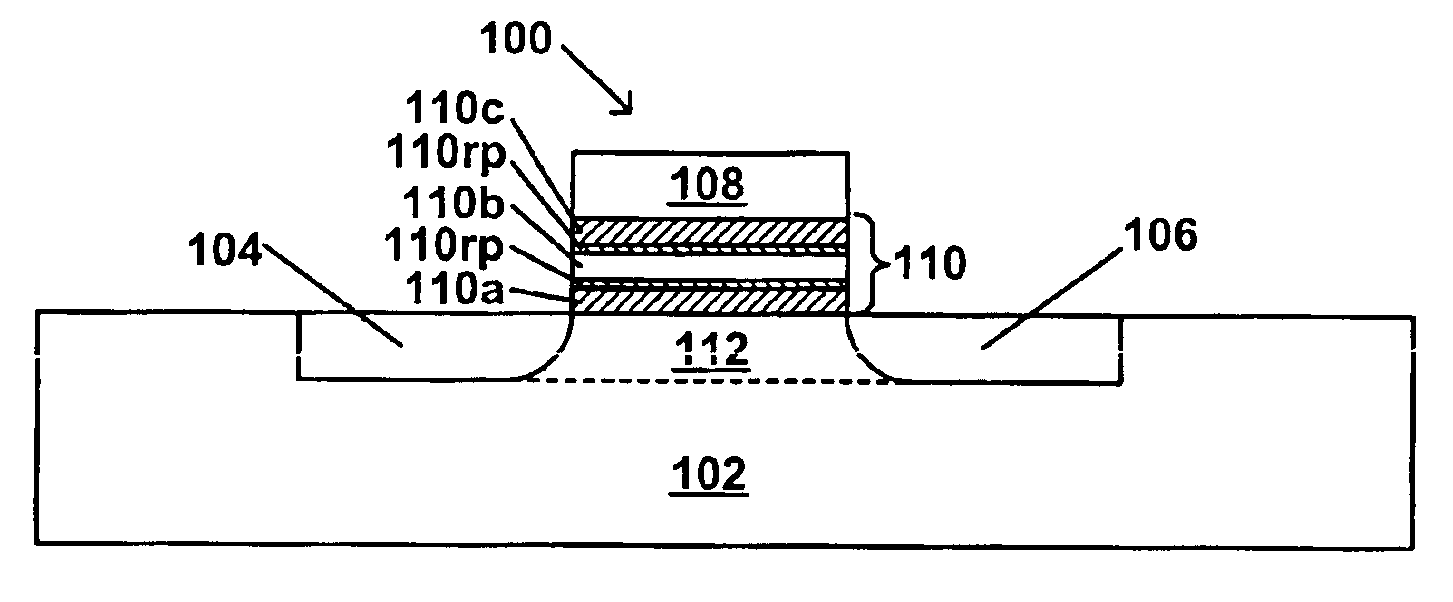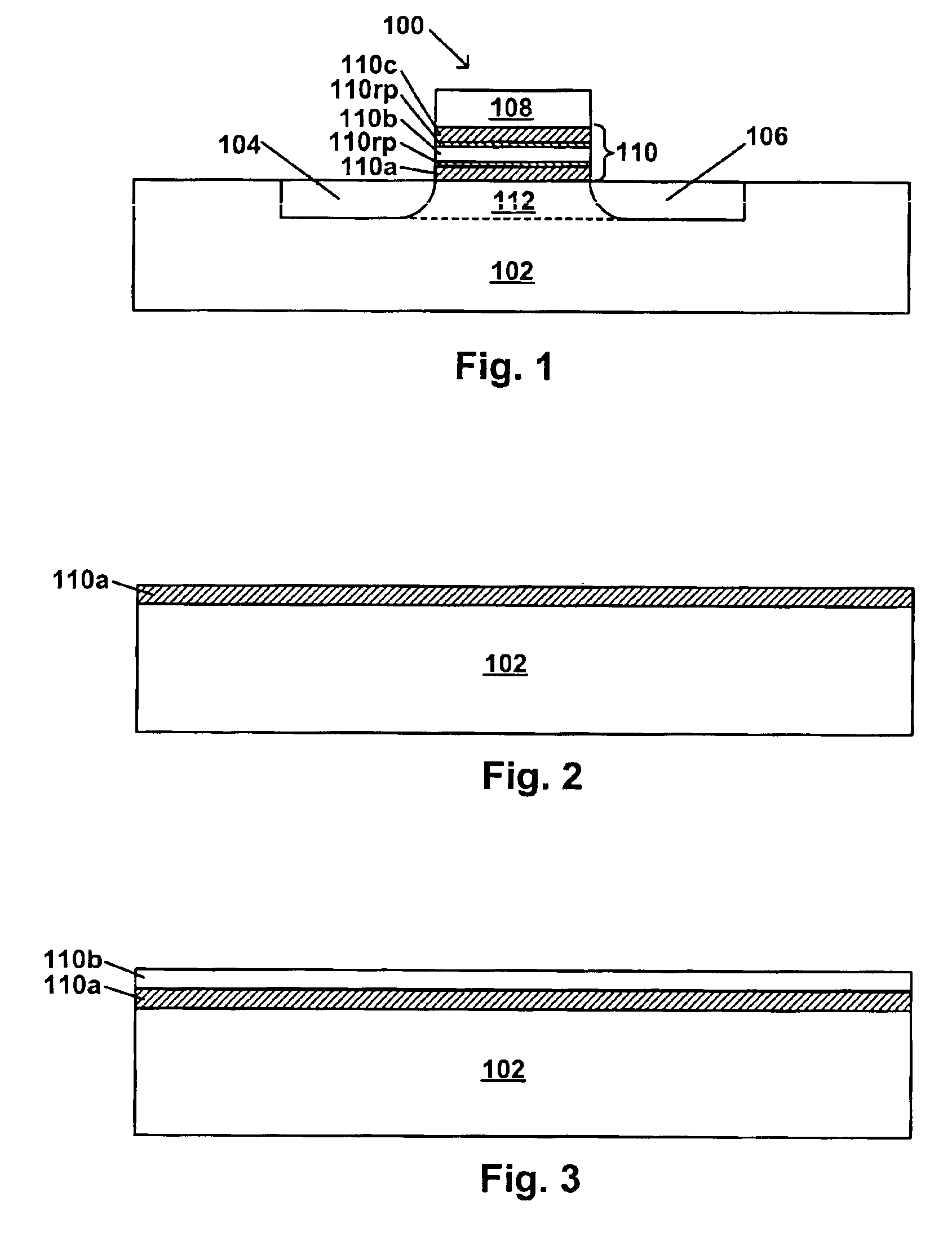Preparation of composite high-K/standard-K dielectrics for semiconductor devices
- Summary
- Abstract
- Description
- Claims
- Application Information
AI Technical Summary
Benefits of technology
Problems solved by technology
Method used
Image
Examples
Embodiment Construction
As used herein, the term “standard-K dielectric” refers to a dielectric material having a K up to about 10. Such standard-K dielectric materials include, for example, silicon dioxide, which has a K of about 4, silicon oxynitride, which has a K of about 4-8 depending on the relative content of oxygen and nitrogen, and silicon nitride, which has a K of about 6-9, and aluminum oxide, which has a K of about 10.
As used herein, the term “mid-K dielectric material” refers to a dielectric material having a K in the range from greater than 10 to about 20. Such mid-K dielectric materials include, for example, composite materials such as hafnium silicate, which has a K of about 14, and hafnium silicon oxynitride, which has a K of about 16, depending on the relative content of oxygen and nitrogen, and hafnium silicon nitride, which has a K of about 18.
As used herein, the term “high-K dielectric” refers to a dielectric material having a K of about 20 or more. Such high-K dielectric materials inc...
PUM
 Login to View More
Login to View More Abstract
Description
Claims
Application Information
 Login to View More
Login to View More - R&D Engineer
- R&D Manager
- IP Professional
- Industry Leading Data Capabilities
- Powerful AI technology
- Patent DNA Extraction
Browse by: Latest US Patents, China's latest patents, Technical Efficacy Thesaurus, Application Domain, Technology Topic, Popular Technical Reports.
© 2024 PatSnap. All rights reserved.Legal|Privacy policy|Modern Slavery Act Transparency Statement|Sitemap|About US| Contact US: help@patsnap.com










